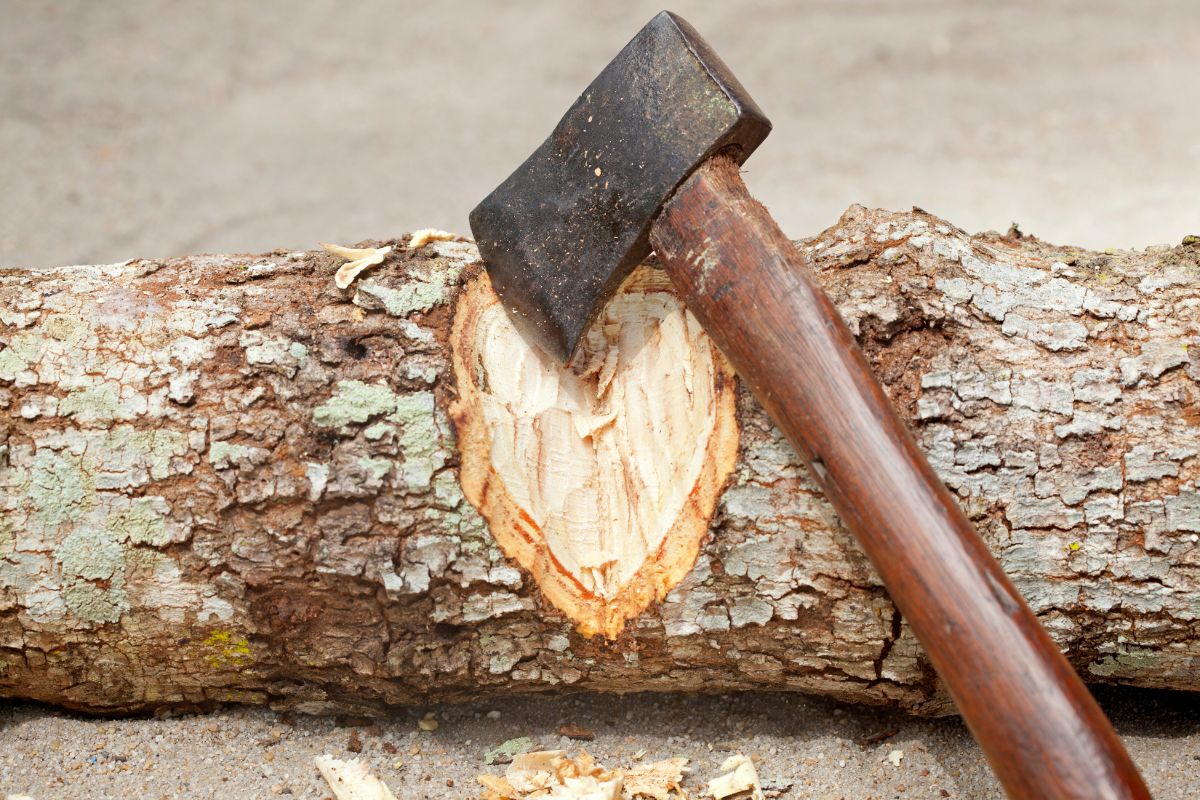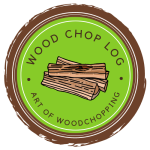Wood chopping is a sport going back centuries, and has been around in various cultures for hundreds of years. While a niche sport, it’s also surprisingly popular, with many wood chopping competitions taking place at agricultural events and fairs.

The people who compete in these competitions are called ‘axemen’ and the aim of the contest is to cut a wooden log as quickly as possible, and the winner is whoever can cut their log the fastest. In order to do this, they need to not only be speedy and powerful, but put skillful tactics to use.
Like any sport, wood chopping has rules in place to keep the competition fair but also safe – safety is naturally very important in a sport involving axes! – such as axemen starting at different times. Still, you may be wondering why such a rule exists?
In this article I’ll be answering that question, as well as giving you a breakdown on important components of competitive axe chopping, such as its history and basic rules. Let’s get into it!
The History Of Wood Chopping
Wood chopping originated in Tasmania in the 1870s, and started as a bet between two axemen who wanted to see which one of them could cut down trees the quickest.
However, some records state that the sport originated in the 1700s in Basque Country, when a man took part in a marathon before chopping ten logs to woo his future wife.
From 1870 to 1890, many competitive axe-chopping events regularly took place on a wager basis, but then in June 1890, a Tasmanian man named H.R. Nicholas founded the first axemen’s association and created the official rules of competitive wood chopping.
The first World Wood Chopping Championship was held the following year in Bell’s Parade, Latrobe, Tasmania.
Wood chopping events were then held in mainland Australia, where to this day the sport is organized within agricultural events that take place over 10 days. It is an incredibly popular event in Australia, drawing in hundreds of competitors.
Wood chopping originated in Tasmania in the 1870s, and started as a bet between two axemen who wanted to see which one of them could cut down trees the quickest.
However, some records state that the sport originated in the 1700s in Basque Country, when a man took part in a marathon before chopping ten logs to woo his future wife.
From 1870 to 1890, many competitive axe-chopping events regularly took place on a wager basis, but then in June 1890, a Tasmanian man named H.R. Nicholas founded the first axemen’s association and created the official rules of competitive wood chopping.
The first World Wood Chopping Championship was held the following year in Bell’s Parade, Latrobe, Tasmania.
Wood chopping events were then held in mainland Australia, where to this day the sport is organized within agricultural events that take place over 10 days. It is an incredibly popular event in Australia, drawing in hundreds of competitors.
Why Do Axemen Start At Different Times?
Wood chopping is considered a handicapped sport, meaning that each axeman is given a handicap based on their past performances and ability when competing. The higher the handicap, the more victories that axeman has.
Types Of Wood Chopping Events

Double Saw/Double Buck
This event involves two participants moving a saw together in order to cut a log. In this type of event, the axes are heavier and longer than usual.
Single Saw/Single Buck
Conversely, this event involves competitors moving a sharp saw over a log to cut it into small pieces.
Standing Block
This is one of the more challenging wood chopping events, as logs are placed vertically on a dummy while wood slices are cut.
Tree Felling
In this event, participants cut a range of small pockets in a wooden board with a metal shoe on the end.
Underhand
This is a popular wood chopping event where participants place foot holes in a log to block it, before standing over and cutting the log with a sharp axe in two pieces as quickly as possible.
Basic Wood Chopping Rules
- Rule 1: The logs provided in competitive wood chopping belong solely to the organizing committee, meaning they are not allowed to be used in a personal capacity by the competitors.
- Rule 2: Competitive logs are measured only by diameter and never by girth. Approved diameters for matches are 750 mm to 325 mm, 300 mm, 275 mm, and 250 mm.
- Rule 3: Contests are not allowed to test the axe assigned for sawing and chopping inside the match arena.
- Rule 4: Competitors must pin their axes with a minimum pin length of 3 mm. It needs to continuously protrude through the handle and the axe head.
- Rule 5: If a contest begins cutting their log before the start time, they are immediately disqualified.
- Rule 6: Contestants are permitted to follow anti-slabbing precautions like banding the log’s end with straps, tapes, and wire, or nailing the end of the log.
- Rule 7: Competitors are not permitted to push the chip with the nose of the axe.
- Rule 8: Competitors are disqualified if any part of the chopped scarf is touched by hand, or if they use the blade to press or push a chip within a log.
Best Axe Brands Used In Competitive Wood Chopping
The axe brands used by competitive axemen are made by top axe-makers, and are considered the best of the best. It’s worth noting that most of these manufacturers are based in New Zealand or Australia, as Australia has a long history of axe racing and forestry competitions.
Keech Axes
Keech is a traditional tool manufacturer from Australia, and their axe workshop is now just one facet of their business. Still, they are famous in Australia – and other countries too for that matter – for building top-quality racing axes.
They use a unique casting-steel method to make sure their axes have the ideal retention, sharpness, and quality. The Timberman KC23 is one of their most famous models.
Osborne axes are designed specifically for axe-racing competitions by Mike Osborne, a man who has been designing axes for over 15 years.
His workshop is also based in Australia, and many competitive axemen turn to him for top-quality axes designed with a range of traditional Australian patterns.
One of the most famous names in the axe-racing business, Tuatahi is a New Zealand-based company, and their name derives from the Maori word for ‘one.’
Their axes are a favorite among a lot of Timbersports competitors, particularly World Champion axeman and lumberjack Adam Lowe, who has said that he owes many of his champion titles to Tuatahi saws and axes.
Frequently Asked Questions
Where Should You Place A Log When Chopping Wood?
Firstly, the log should be placed on a surface that is level and firm, and it should be at waist height. The lower you place the log, the more likely you are to bend your back and risk injury. You may not only risk injury in your back, but the potential power loss can also lead to injury.
How Should You Wield An Axe?
The best way to wield an axe is to grip it with one hand, placing your hand towards the axe head. Meanwhile, place your other hand towards the bottom of the handle.
Many axemen like to place their dominant hand near the head of the axe. Try to avoid tensing up when swinging the axe, as it will cause you to lose power.
What Does A Grenade Mean In Wood Chopping?
Also known as a ‘splitting wedge’ a grenade is a metal lump brought to a sharp point. They are beneficial for splitting a huge portion of a tree or for breaking challenging logs.
Final Thoughts
I hope this article has given you some insight into competitive wood chopping, its history, what axes competitive axemen like to use, and some basic rules – such as why axemen need to start at different times!
Related Posts
- How To Get Involved In Timbersports
Timbersports is an exciting extreme sport with competitors from all over the world! To compete…
- What Kinds Of Woods Are Used In Timbersports?
Ever wondered what the lumberjacks of the world do for sports? Timbersports is an incredible…
